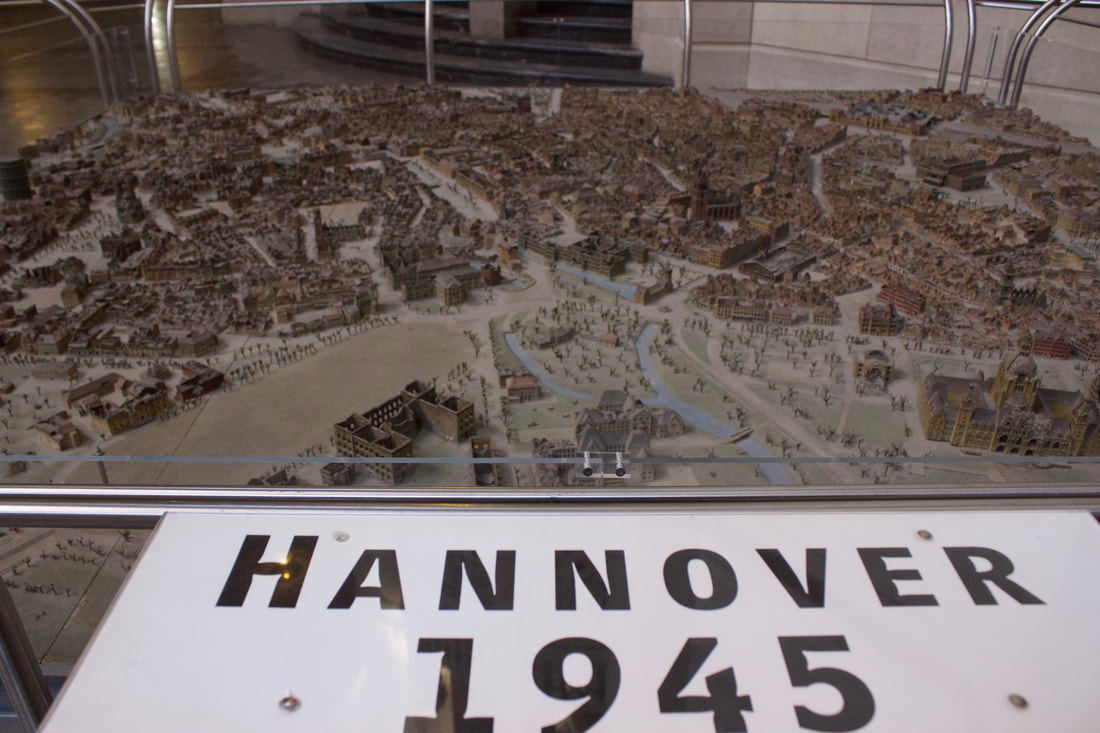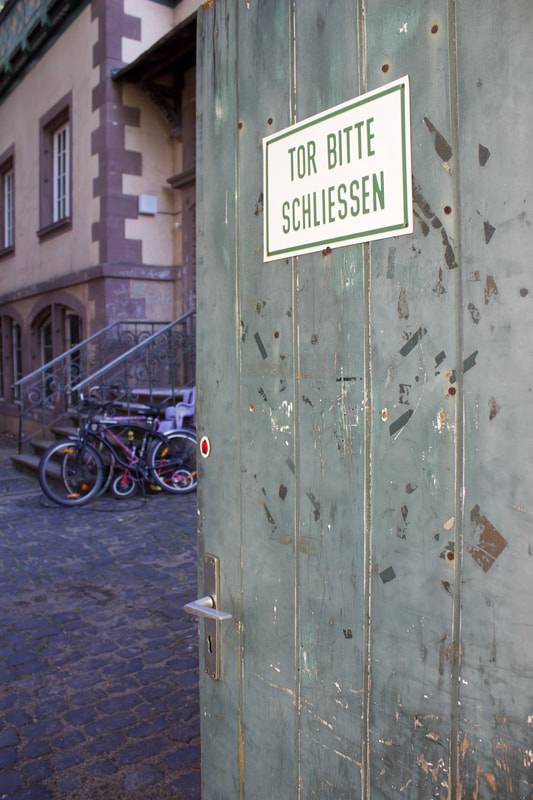The Weimar Republic ended once Hitler became of the Chancellor of the Reich on January 30, 1933. During the war, 88 air raids destroyed over fifty-percent of the city, with over 90% of the downtown destroyed. The first raid occurred in May 1940, destroying factories, residential communities and monuments.
Downtown looks a bit like Dortmund with post war architecture, sadly that was rebuilt upon once beautiful medieval architecture. Even today, there are occasional bomb threats in Sudstadt where Nazis once planted bombs underground; thus, history still exists today. If searching for a bit of history while meandering Hannover, here are some interesting World War II sites you can’t miss.
The Rathaus is Hannover's city hall building. The bomb raids damaged the Rathaus, though not nearly as bad as other buildings in town. Inside, guests can look at models of the city's foundations as well as pre and post war city structure.
Aegidien-church Hannover
Located near Mitte and Altstadt are the remains of the once operating Aegidien church. The church like most of Hannover was destroyed during the bomb raids. Today the exterior exists, with ivy and plaques plastered alongside the brick façade. This is quit a photogenic spot during the fall season when the ivy turns fiery red, a symbol of Germany’s past.
Air Raid Shelter
Located in Deisterplatz, Hannover, is a spire-looking building, which was once an air raid shelter. Labelled “Bunker Number 8,” began operation on May 26, 1941. The bunker could fit 698 individuals, but during air raids locals rushed into the shelter exceeding capacity.
Old town looks old, but technically is not. The original old town was bombed to pieces during the war and what you see today was rebuilt in the 1950’s in the original design. Since the Leibnizhaus was also destroyed, they recreated the building in Old Town, which is not its original location. Inside the notable Marktkirche, one can see historic images of the bombing remains of Old Town and the church. The church lost it’s dome, and was also rebuilt post war.
The Golden Plaques
In Hannover and throughout Germany, you'll notice golden plaques on the ground. Often times these plaques are in front of apartment buildings, or areas where an apartment once stood. These plaques are in honor of Jewish people who were taken from their home and sent to a concentration camp. The plauques include the person or family's name as well as their dreadful camp.
The Maschsee is an artificial lake with quit a history. Today locals sachet the lake and enjoy a beer at one of the many beer gardens alongside the lake, but this luxury came with a cost for the German people. The operation of the lake occurred between 1930-1933 to provide jobs during Hannover’s Great Depression. This was perfect for the Nazi party and used in their propaganda messaging to reduce the 30% unemployment rate; however, this project idea existed before the Nazis took power. The completion and opening of the project occurred on May 21, 1936, and eventually used by locals and Nazi troops goose-stepping around the perimeter. During the air raids, canvasses covered the lake with fake landscapes to confuse the bombers on the whereabouts of their hiding.
Along the lake, you’ll notice signs for Hannover’s book burning and the Bismarck Tower that once existed. Nazi statues such as the Siegessäule which rises a good 20 meters in the air. This is of a strong Aryan man who holds the Olympic fire in his hand, which erected in 1936. At the bottom is an inscription that translates to something similar, "Will to build / gave blessed hands / the blessing of work / joy, health and strength / donation henceforth ... The lake! / 1934-1936."
The “Lion Bastion” (Löwenbastion) are two lion sculptures often associated with the Nazi party. The controversial artist Arno Breker, as born in 1900 in Germany and was one of the most famous artists in the Third Reich. He worked together with others including Albert Speer and marched in the wake of Hitler 1940 in his former homeland of France. He was shot in 1944.
While walking Maschsee, be sure to check out the Cemetery of Honor on the north end, across the street.
This small cemetery is on the north bank of Maschsee. Buried here are 386 forced laborers who came from various parts of Europe and died in Hannover at the end of the second World War. Nearly half, 156 buried souls were victims of a mass execution that occurred on April 6, 1945 at Stadtfriedhof Seelhorst, just four days before the Americans arrived.
The Seelhorst cemetery also contains a memorial for the Hannover bomb raid victims. The other World War II cemetery is adjacent to Hannover called The Hannover War Cemetery, located at Harenberger Meile, 30926 Hannover, Germany.
Located in Liste, and nearby the notable forest, is one of Hannover’s most popular beer gardens. Packed day and night, come early (or late) to enjoy a (massive) mass and some excellent Greek food. Be sure to check out the building and surrounding plaques that note World War Two history. Be sure to check out the building and surrounding plaques that note World War Two history, where many people, specifically women were killed. Besides death, Lister Turm has a rich history of selling beer for over 100 years. On the way to the beer hall from the forest, you’ll notice various plaques or statues that commemorate a victim or tragic event from the war.
There are so many other World War II spots in Hannover, and just meandering around town you'll find something new or a memorial that commemorates a lost soul or soldier. What is your favorite World War II spot in Hannover?
Let's Connect!
This Lemon Tree article is now featured on GPSmyCity. To download this article for offline reading or travel directions to the attractions highlighted in this article, go to Best World War II Sites in Hannover, Germany.













 RSS Feed
RSS Feed